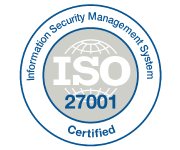See What's Trending In The Background Check Industry
What is the Difference Between Biometric Identification and Verification?
 Biometrics plays an increasingly crucial role in the rapidly evolving landscape of security and personal identification. Biometric technologies, which include fingerprint scanning, facial recognition, and iris scanning, are widely used for various purposes, from unlocking smartphones to border security checks. Central to understanding biometrics are two key concepts: biometric identification and verification. While these terms are often used interchangeably, they have distinct meanings and applications.
Biometrics plays an increasingly crucial role in the rapidly evolving landscape of security and personal identification. Biometric technologies, which include fingerprint scanning, facial recognition, and iris scanning, are widely used for various purposes, from unlocking smartphones to border security checks. Central to understanding biometrics are two key concepts: biometric identification and verification. While these terms are often used interchangeably, they have distinct meanings and applications.
Biometric Identification: Who Are You?
Biometric identification, also known as biometric authentication, is the process of determining an individual's identity based on their unique biological and behavioral characteristics. It involves comparing biometric data against a database containing a range of biometric records to find a match.
- How it works: When a biometric trait, such as a fingerprint or facial pattern, is presented, the system scans its database to find a matching profile. This process is akin to a “one-to-many” comparison, in which one biometric sample is compared against several stored records.
- Applications: This method is commonly used in situations requiring the identification of an unknown individual, such as finding a person in a criminal database, identifying employees in large organizations, or identifying missing persons.
 Biometric Verification: Are You Whom You Claim to Be?
Biometric Verification: Are You Whom You Claim to Be?
Biometric verification, or authentication, is a process to confirm an individual's identity by comparing their presented biometric data with a specific biometric template stored in the system. It's a “one-to-one” comparison in which the system checks if the given biometric matches the detailed biometric data linked to the user's claimed identity.
- How it works: In this process, the individual first claims an identity, usually by providing a username or ID number. The system then compares the presented biometric data, such as a fingerprint or facial scan, with the specific biometric data linked to that claimed identity in the database.
- Applications: Biometric verification is widely used for personal devices, like in the instance of unlocking a smartphone with a fingerprint or facial ID. It can also be used for access control, such as biometric entry systems for secure facilities, and user authentication in financial transactions, such as using a fingerprint to authorize a payment.
Key Differences
- Nature of comparison: Identification involves a “one-to-many” comparison, while verification is a “one-to-one” match.
- Purpose: Identification determines who the individual is, often from an unknown pool, while verification confirms if they are who they claim to be.
- Database requirements: Identification requires a more extensive database to be effective, while verification only needs to match the biometric data with a specific user's profile.
 The Key Role of ISB Global Services in Biometric Identification and Verification
The Key Role of ISB Global Services in Biometric Identification and Verification
ISB Global Services plays a pivotal role in biometric identification and verification by offering robust solutions that cater to various industries. ISB provides advanced biometric screening services, which are crucial for employment background checks, identity verification, and ensuring workplace safety. Their services leverage the latest biometric technologies to provide accurate and reliable results, whether in the case of verifying an individual's identity or identifying them from a broader database.
Understanding the distinction between biometric identification and verification is necessary in a world where security and accurate identification are of the utmost importance. While both processes rely on unique biological characteristics, their applications and methodologies differ significantly. With the integration of advanced biometric solutions by ISB Global Services, organizations can enhance their security measures, streamline their operations, and protect their assets more effectively. As biometric technologies continue to evolve, they will play an increasingly vital role in shaping the future of security and identification.







While we are not affiliated with or employed by these organizations, we may reference our verified status in marketing materials, proposals, and client communications to demonstrate ISB’s commitment to compliance and security.